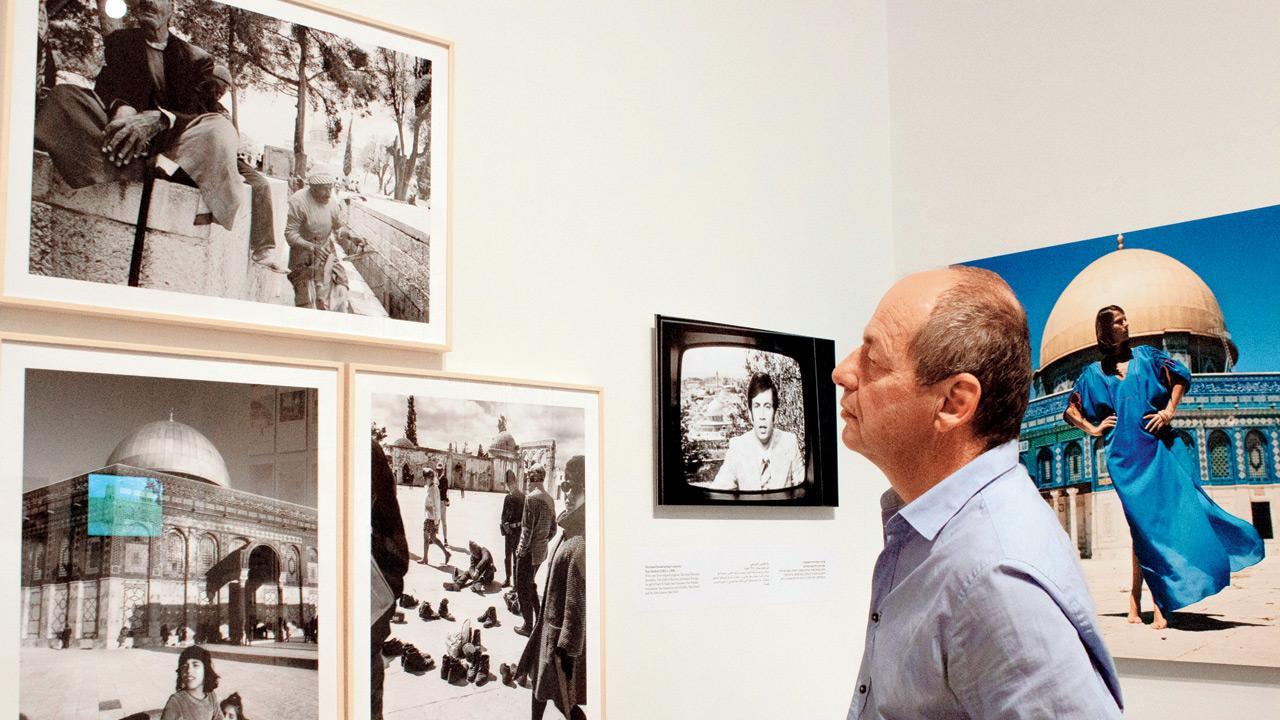In an ongoing online exhibition, the embassy of Israel highlights India’s influence on its country’s art and culture

Dr Shimon Lev, one of the curators of Heat and Dust, holds a doctorate, specialising in the mutual influence of Jewish and Indian cultures
India’s vibrant craft and culture has found recognition across the globe, and has influenced various forms of art and design. Paying homage to this, the embassy of Israel has created a platform to examine how Israeli artists from multiple backgrounds have echoed aspects of our country and its cultural nuances in their work. Collaborating with the India International Centre in New Delhi, the exhibition titled Heat and Dust, examines each artist’s independent perspective and relationship with the country.
Back to the Sources (Ganga’s Source) or How I almost became a Sadhu, 2021, by Shimon Lev. Mixed media, 99x71 cm
One of the curators of the exhibition, Israeli multidisciplinary artist and photographer, Dr Shimon Lev, holds a doctorate, specialising in the mutual influence of Jewish and Indian cultures. He reflects, “I first visited India in 1984, when I’d just completed my service with the Israeli army”. Lev was approached by the producer of a new gallery in Israel to showcase his work. “I started noticing a pattern of influences through my research, and, instead, proposed curating a show with Jewish artists having roots in India. Israel is a small country, and through all my connections, I discovered several young artists who were weaving a fine story about their experiences with India in their work.” Lev’s early works are also being showcased at the exhibit, which include self portraits that explore the idea of being a sanyasi.
Tilapia Fish - Indian Gyotaku, 2017, by Eyal Segal. Indian ink on canvas, 40x32 cm. Pic/Yotam From
Similarly, multidisciplinary artist Maya Smira began her travels across the country after completing her military training. She remembers, “I always felt a connection to this place since I was a child because of my Indian name. While visiting temples, palaces, villages and mountains, I started to get more and more intrigued by women practising different styles of Indian classical dance. The delicate balance between exuberant movements and pauses made me think of the philosophy of time, motion and rest in our daily lives.” Projecting a circle of hand gestures and poses combined with a collage of self portraits while practising a dance, Smira’s video installation is a symbolic interpretation of the intricacies of this fluid form of Indian art.
Maya Smira
While Indo-German artist Eyal Segal feels a strong connection with his Indian roots, especially in his work, he laments the fact that he hasn’t had the opportunity to visit the country yet. “Most of my work has always explored the roots and origins of a memory. When you remember something, in that moment, you jump back to another time while physically being present somewhere else. Often, you’ve never lived through a memory, but you feel like it’s a part of your DNA. I was intensely drawn to create a series with the traditional Japanese Gyotaku method of printing fish. The practice, which dates back to the mid-1800s, was used by fishermen to record their catches. Over time, I discovered that my grandfather, who died when I was very young, was a fisherman in Cochin! This pieced together a puzzle I didn’t know I was trying to solve.”
Achia Anzi and Eyal Segal
Although most of Israeli artist and researcher Achia Anzi’s work explores the emotions of being an immigrant, he wanted to focus on the experience of discovering the nuances of a new place instead of the hardships. “When I was a backpacker visiting India, I would call my family from phone booths. These were extremely jugaadu spaces—if the fan was on, it was too loud to hear my mum, and if it was off, it would get boiling hot. These booths also became black holes of sorts—when I was in it, I’d be back home with my family; but once I’d step out, I’d get startled by the hustle and bustle on the crowded streets,” he remarks. This sensorial experience made him recreate an STD/ISD booth for a similar immersive experience, along with a milestone with the Hebrew word makom. “Meaning ‘place’, this is a very loaded word in Israeli culture. For many of us, the idea of a place of belonging is very abstract, and cannot be linked to a single spot. It’s a constant discovery of reaching several milestones to figure out who we are.”
WHAT: Heat and Dust
WHERE: ww.iicdelhi.in/programmes/heat-and-dust-between-india-and-zion
WHEN: Until July 25
 Subscribe today by clicking the link and stay updated with the latest news!" Click here!
Subscribe today by clicking the link and stay updated with the latest news!" Click here!









